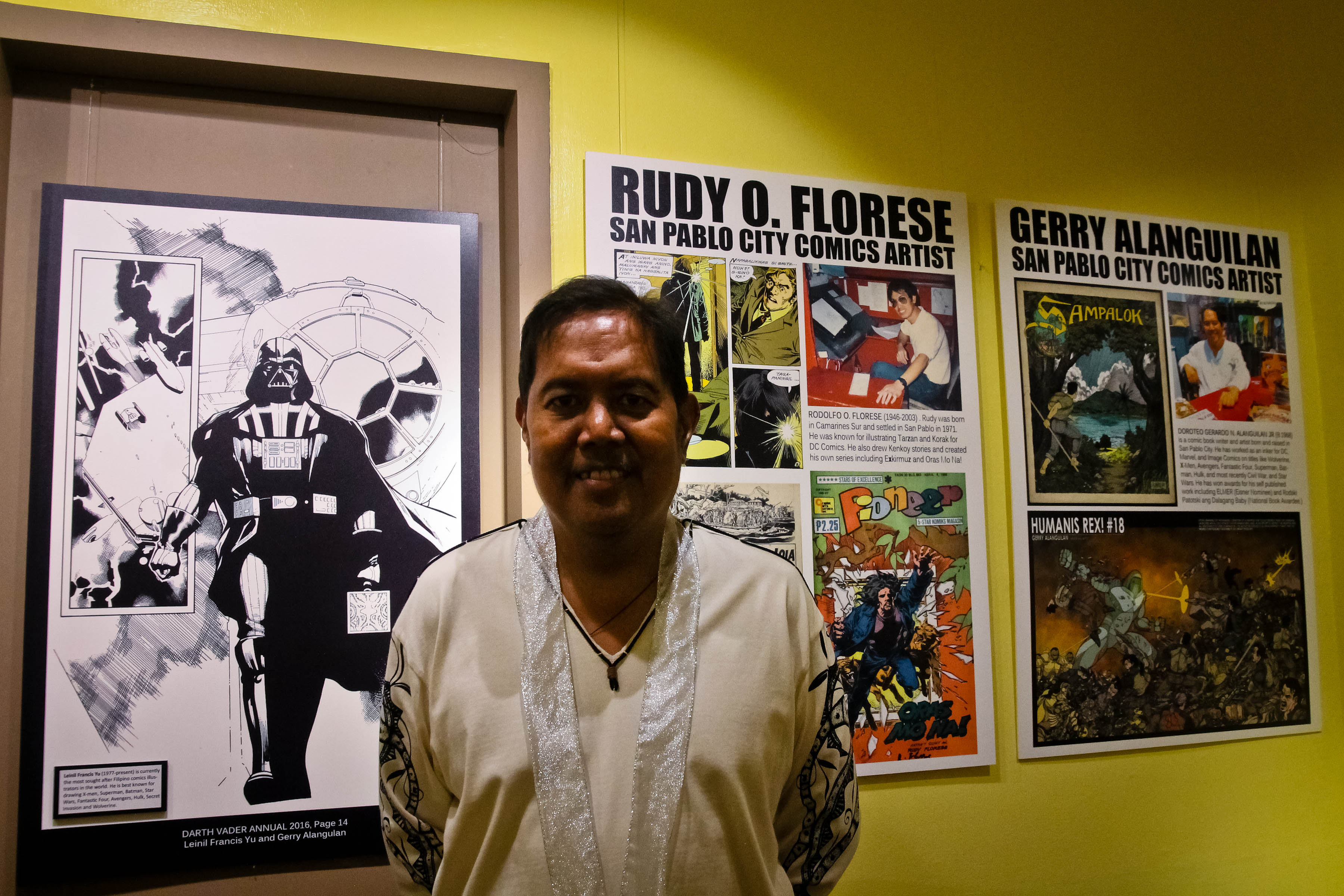
If choices were pages being turned, then Gerry Alanguilan turned the pages of an entire chapter in Philippine comics—komiks. That’s why Alanguilan, who died last week at the age of 51, was the most important Filipino komiks influence in his generation. He changed komiks forever. He did this in three ways:
First, Alanguilan fought to preserve the work of the golden age of komikeros, such as Alex Niño, Alfredo Alcala Larry Alcala, Francisco V. Coching, Nes Ureta, Ruben Yandoc, Mars Ravelo, Tony Velasquez and Rudy Florese (who is also the father of Alanguilan’s wife, Ilyn). He put up the online archive in 2016, but today, the Komikero Komiks Museum, which features work from both that earlier generation and the current generation of komikeros, stands proudly inside Tia Maria’s Sining at Kultura on No.29 Marasigan St., in San Pablo City.
It was always vital to preserve all this work and during a time when literally nobody was doing it, Alanguilan worked to save and scan as much of it as he could. The Komikero Komiks Museum stands as a tangible symbol of what Alanguilan fought for.
Second, Alanguilan proved it was possible for Filipinos to work full-time in contemporary comics. Filipinos had worked in American comics a long time ago—Nestor Redondo, Tony de Zuniga and Alfredo Alcala are good examples—but those days were long ago. Holding a degree in architecture from the University of Santo Tomas, Alanguilan worked as an architect for two years before becoming a full-time creator in 1992. He became a comic book professional for American companies before the Internet, necessitating the use of FedEx and the likes to ship back and forth.
In American comics, he broke through as an inker and at the time of his death, he was considered a master of the art, working with his hands and beloved Rotring pens. Inkers do not get enough credit, but Alanguilan always spoke out about the role that inkers played in comic books. After inking his inspiration, Whilce Portacio, Alanguilan began inking over the pencils of the artistic collaborator he would become focus on for the rest of his inking career: Leinil Francis Yu. Together, they did Mark Waid’s “Superman: Birthright,” Brian Michael Bendis’ “Secret Invasion” (rumored to be coming soon to the screen as part of the Marvel Cinematic Universe) and, most recently, Ta-Nehisi Coates’ “Captain America,” among many other series.
“When you think of my work, you are mostly remembering and looking at Gerry’s ink lines,” Yu said in a Tweet. Alanguilan led a wave of Filipinos currently working in American comics including Yu, Carlo Pagulayan, Stephen Segovia and Mico Suayan, among others (also, thanks, Internet).
Finally, Alanguilan made possible this new golden age of komiks. In the early 1990s, making your own comics in the Philippines felt like a fool’s errand. How would you do it? Who would read it? What would be the endgame? Alanguilan broke that barrier by drawing and writing “Wasted” from 1994-1996 (he later collected that’s now on its third edition) through an imprint called Deranged Comics. This visceral, violent comic followed heartbroken Eric, armed with a hand gun, as he wanders the streets of Manila, seeking to right the wrong that’s been done him—and dispatching those who get in his way, accidentally or purposefully. It was cathartic and shocking, especially for 1994. “Wasted” was not only the star-birth of a talent (Warren Ellis famously loved it) but also a peek into what was possible. He was one of the first of the seminal Alamat Comics creators.
Alanguilan, known popularly as the Komikero, would continue to produce original work now through his Komikero Publishing. “Rodski Patotski: Ang Dalagang Baby,” made in 2014 in collaboration with Arnold Aree, is Alanguilan at his most whimsical, focusing on a girl with a prodigious intelligence. Alanguilan’s undisputed masterpiece is 2009’s “Elmer: A Comic Book,” later published abroad in various languages and editions (most notably in the US by Slave Labor Graphics), which imagines a modern-day Philippines where all the chickens have turned sentient and have to fight discrimination on many levels. This wacky idea is played absolutely straight, and Alanguilan builds a completely fleshed-out world with fully realized characters (the main one is the chicken Jake Gallo). “Elmer” was nominated for Best New Graphic Album for the 2011 Will Eisner Comics Industry Awards, the most prestigious award in the field and the first Filipino work to have done so.
“Elmer” won two international prizes, the ACBD Prix Asie or the Asia Prize for Criticism Award and the Prix Quai des Bulles Award and is coming out soon in yet another edition. It has received praise from reviewers and readers the world over. “Elmer” is the greatest Filipino graphic novel ever made, counting among the greatest in the world. His work deserves to be read not only by more Filipinos but everyone.
Alanguilan proved Filipino comic creators could do it, paving the way for everything from Arre’s “The Mythology Class,” Carlo Vergara’s “Ang Kagila-gilalas na Pakikipagsapalaran ni Zsazsa Zaturnnah” and Budjette Tan and Kajo Baldisimo’s “TRESE.” In an age when such properties are being adapted for TV and streaming and comics conventions are a regular occurrence, Alanguilan needs to be remembered as a catalyst. He freely provided his advice and support on social media (his @komikero Twitter account was a must) and in person. Now it will be up to the next generation of creators to carry on his work. As Komiket cofounder Paolo Herras Tweeted: “The best way to celebrate Gerry’s life is for all komiks creators to unite and help uplift our community. Produce better work, represent komiks in public events, support each other, and respect each other’s journey. Komikero is not just Gerry, komikero means our entire community.”